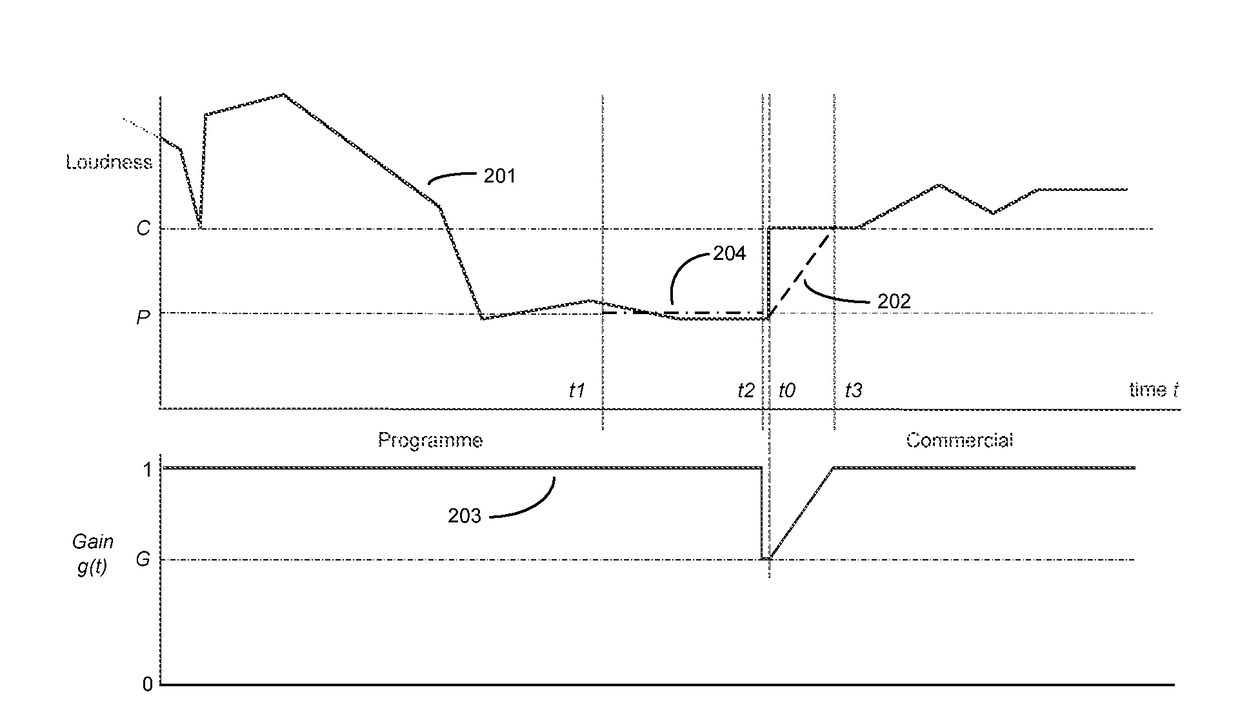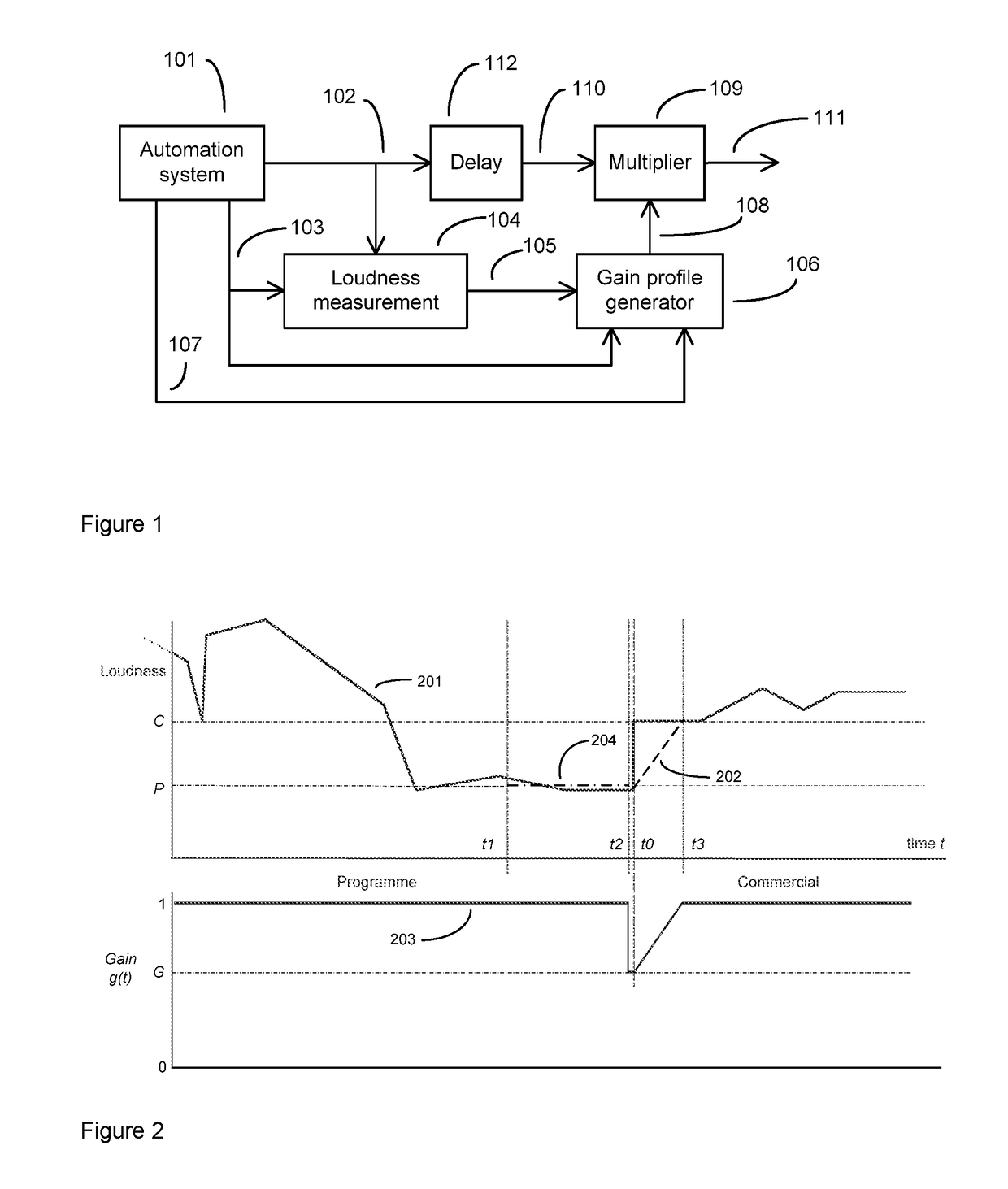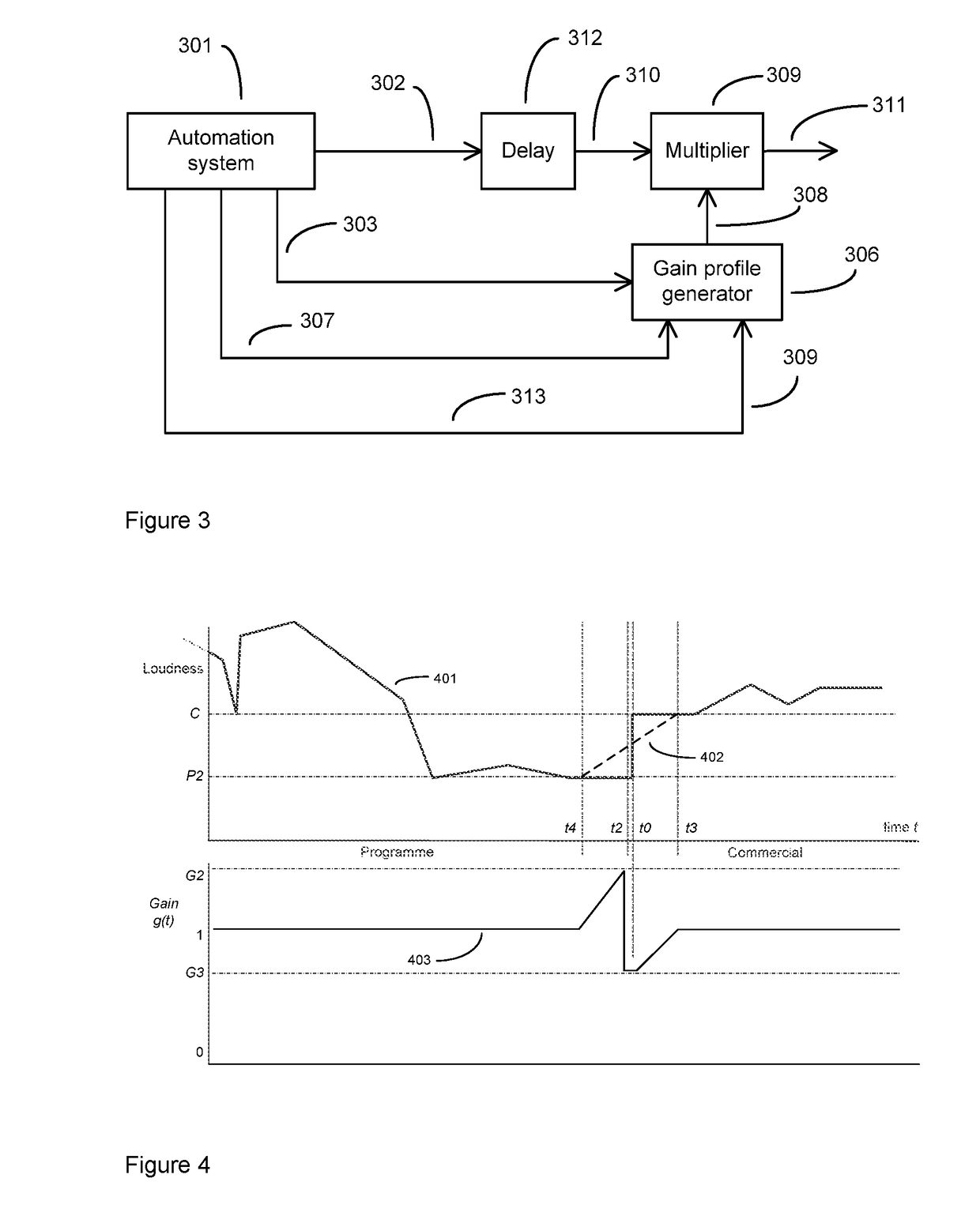Management of broadcast audio loudness
a technology for broadcast audio and loudness, applied in the direction of amplification control, electrical apparatus, amplification control, etc., can solve the problems of reducing the dynamic range, affecting the quality of broadcast audio, so as to reduce the abruptness of the transition and high impact
- Summary
- Abstract
- Description
- Claims
- Application Information
AI Technical Summary
Benefits of technology
Problems solved by technology
Method used
Image
Examples
first embodiment
[0021]the invention is illustrated in FIG. 1. This embodiment may be used in the case of live broadcasting where the loudness of the programme is not known in advance, but the loudness of the commercial in the period following the junction has a known value C. In this embodiment, an automation system (101) controls the playout of a broadcast audio signal (102). Suppose a junction in the audio signal (102) between programme and commercial occurs at time t0. At time t1, which is a known, fixed period before the junction, the automation system (101) sends a trigger signal (103) to a loudness measurement device (104), instructing it to begin loudness measurement. A suitable period (t0-t1) might be 15 seconds. At time t2, a much shorter period before the junction, the loudness measurement device (104) stops capturing data for loudness measurement and calculates an average or other representative loudness value P (105) of the input signal (102) over the period (t2-t1). A suitable short pe...
second embodiment
[0024]the invention will now be described. This embodiment may be used when the programme is pre-recorded and information about its loudness is known in advance. Referring to FIG. 3, an automation system (301) controls the playout of a broadcast audio signal (302). As already described, a junction in the audio signal (302) from programme to commercial occurs at time t0. At time t4, which is a known, fixed period before the junction, the automation system (301) sends a trigger signal (303) to a gain profile generator (306). A suitable period (t0-t4) would be 5.25 seconds. Starting at time t4 and ending at time t3 already defined, the gain profile generator generates a gain control signal (308) which starts by steadily increasing the gain, reaching a value of G2 at time t2 already defined, and which then reduces the gain abruptly to G3 so as to avoid a jump in loudness. At time t0, the moment of the junction, the gain profile generator generates a steadily increasing gain control sign...
PUM
 Login to View More
Login to View More Abstract
Description
Claims
Application Information
 Login to View More
Login to View More - R&D
- Intellectual Property
- Life Sciences
- Materials
- Tech Scout
- Unparalleled Data Quality
- Higher Quality Content
- 60% Fewer Hallucinations
Browse by: Latest US Patents, China's latest patents, Technical Efficacy Thesaurus, Application Domain, Technology Topic, Popular Technical Reports.
© 2025 PatSnap. All rights reserved.Legal|Privacy policy|Modern Slavery Act Transparency Statement|Sitemap|About US| Contact US: help@patsnap.com



